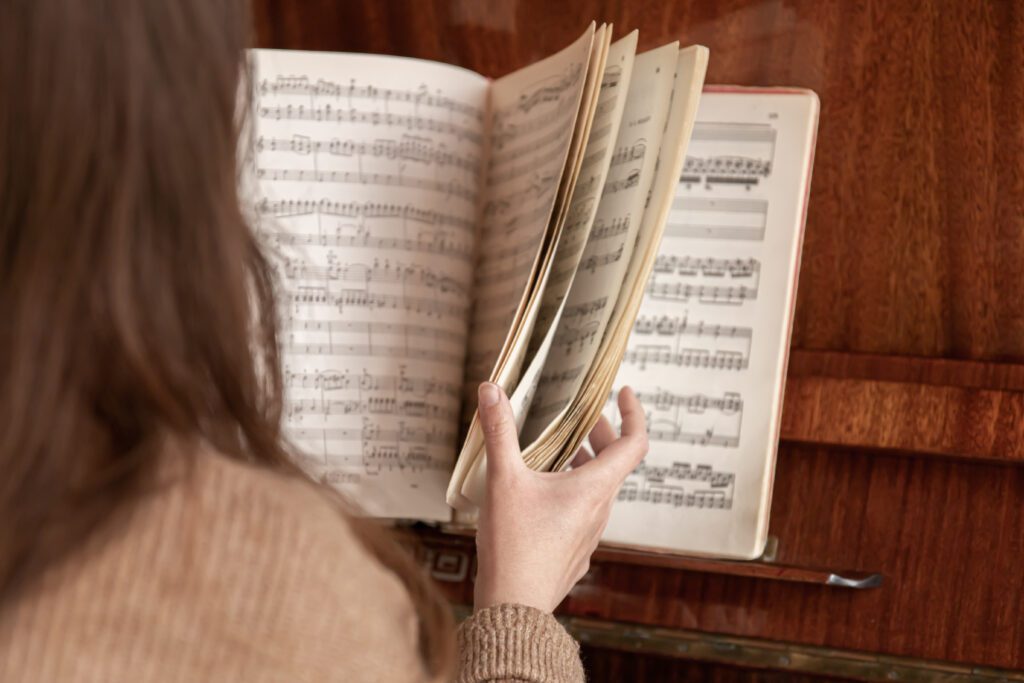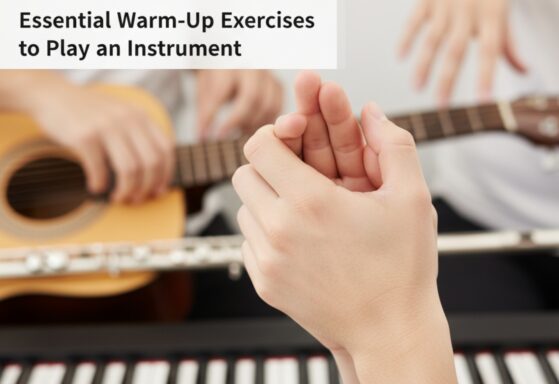How to Read Sheet Music: A Step-by-Step Guide
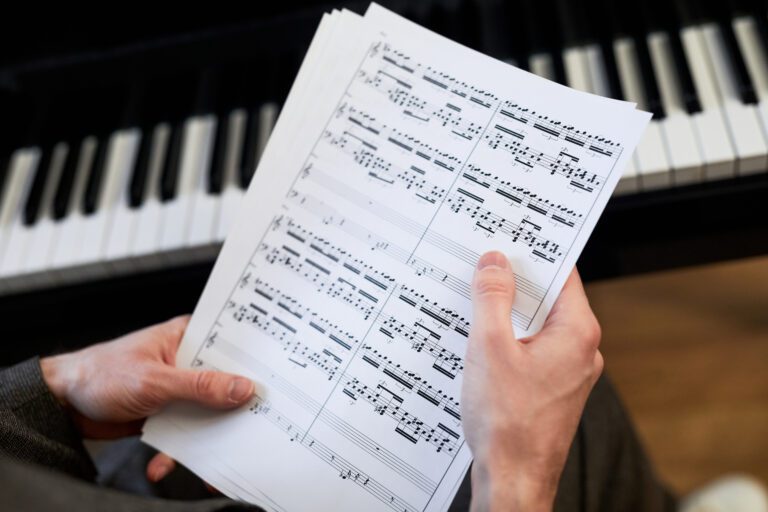
For beginners in the world of music, sheet music can often seem like a foreign language. But just like reading and writing in English, learning to read music opens up a whole new world of communication and creativity. Whether you’re playing the piano, guitar, violin, or singing, understanding sheet music will make you more confident, expressive, and technically skilled.
At The Mystic Keys, we believe in building strong foundational skills that make music a lifelong joy. In this detailed guide, you’ll learn how to read sheet music step-by-step, explained in an easy-to-understand way.
What is Sheet Music?
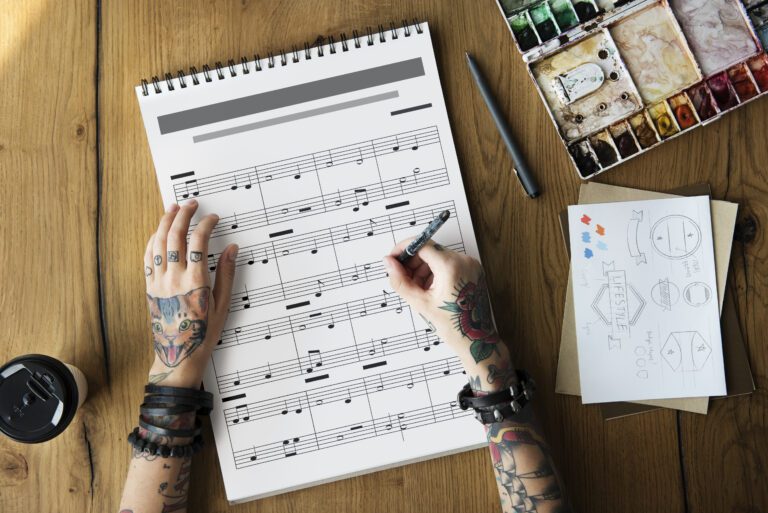
Sheet music is the written form of music using symbols and notes to communicate sound. It includes information on:
- Pitch (which note to play)
- Rhythm (how long to play it)
- Dynamics (how loudly or softly to play)
- Expression (style and emotion)
Step 1: Understanding the Staff
The staff is a set of five horizontal lines where music is written. Each line and space represents a different musical note.
Treble and Bass Clef
- Treble Clef (G Clef): Used for higher-pitched instruments like piano (right hand), violin, flute, and vocals.
- Bass Clef (F Clef): Used for lower-pitched instruments like bass guitar, cello, or piano (left hand).
Think of the staff as a musical grid where every note has its home.
Step 2: Learning the Notes on the Staff
Each line and space corresponds to a musical note.
In the Treble Clef:
Lines (from bottom to top): E – G – B – D – F (Every Good Boy Deserves Fudge)
Spaces: F – A – C – E (FACE)
In the Bass Clef:
Lines: G – B – D – F – A (Good Boys Deserve Fudge Always)
Spaces: A – C – E – G (All Cows Eat Grass)
These mnemonics make it easier to memorize note placement.
Step 3: Understanding Note Types and Rhythms
Music is not just about which note to play, but how long to play it.
- Basic Note Values:
- Whole Note: 4 beats
- Half Note: 2 beats
- Quarter Note: 1 beat
- Eighth Note: ½ beat
Rests:
- Rests indicate silence for a specific number of beats.
- Whole Rest: 4 beats of silence
- Quarter Rest: 1 beat of silence
- Reading rhythms accurately is key to keeping the right tempo.
Step 4: Recognizing Time Signatures
A time signature appears at the beginning of a piece. It tells you how many beats are in each measure and which note value gets the beat.
Example:
- 4/4: Most common. 4 beats per measure. Quarter note = 1 beat.
- 3/4: Waltz time. 3 beats per measure.
- 6/8: Compound time, often felt as two strong beats.
Step 5: Key Signatures and Accidentals
A key signature tells you which notes are sharp or flat throughout the piece.
- Sharps (#): Raise a note by a half step
- Flats (b): Lower a note by a half step
- Naturals (): Cancel out a sharp or flat
This helps you stay in the correct musical key while playing.
Step 6: Understanding Dynamics and Articulations
These symbols give the music emotion and style.
Dynamics:
- p (piano): soft
- f (forte): loud
- mf / mp: medium soft/loud
- crescendo (<): gradually louder
- decrescendo (>): gradually softer
Articulations:
- Staccato (.): short and detached
- Legato (slur): smooth and connected
- Accent (>): emphasize the note
Step 7: Reading Ledger Lines
When notes go above or below the staff, they use ledger lines.
Used for high or low pitches that don’t fit within the 5 lines
Common in piano and vocal music
Step 8: Putting It All Together
Now that you know the components, it’s time to practice real pieces. Start with simple exercises:
- Flashcards for notes
- Clapping rhythms
- Singing with solfege (Do, Re, Mi)
- Playing short beginner pieces
Practice slowly and consistently. Over time, reading sheet music will become as natural as reading a book.
Tips to Learn Faster
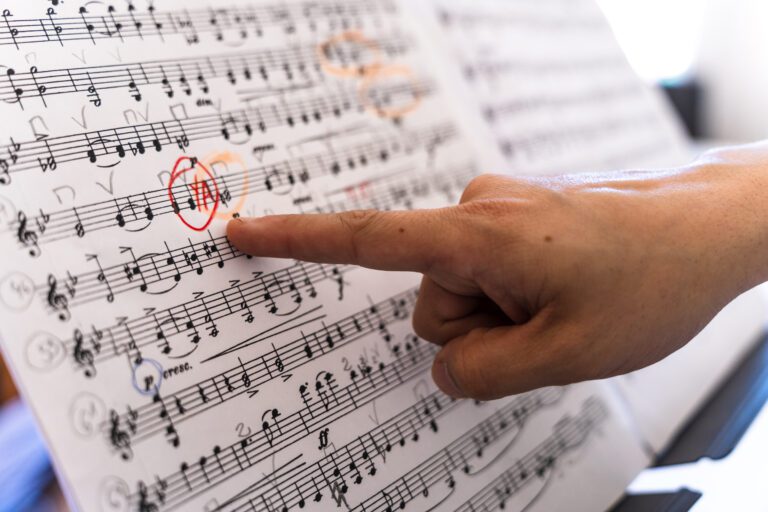
1. Practice a little every day
2. Use beginner books like Alfred’s, Bastien, or Trinity College books
3. Work with a music teacher who can guide your reading journey
4. Start with familiar tunes (Happy Birthday, Twinkle Twinkle, etc.)
5. Use apps like Simply Piano, Flowkey, or MuseScore for extra support
The Mystic Keys Approach to Sight-Reading

At The Mystic Keys, we:
- Start from the very basics—no prior knowledge needed
- Offer sheet reading as part of our piano, keyboard, vocal, and theory courses
- Use visual aids, interactive PDFs, and recordings
- Share real-time feedback in one-on-one Zoom lessons
- Help students prepare for Trinity College exams
Sheet music reading becomes easier with guidance, practice, and encouragement. Whether you’re learning Western Classical, Worship, Jazz, or Film music, reading music helps you unlock more.
Final Thoughts
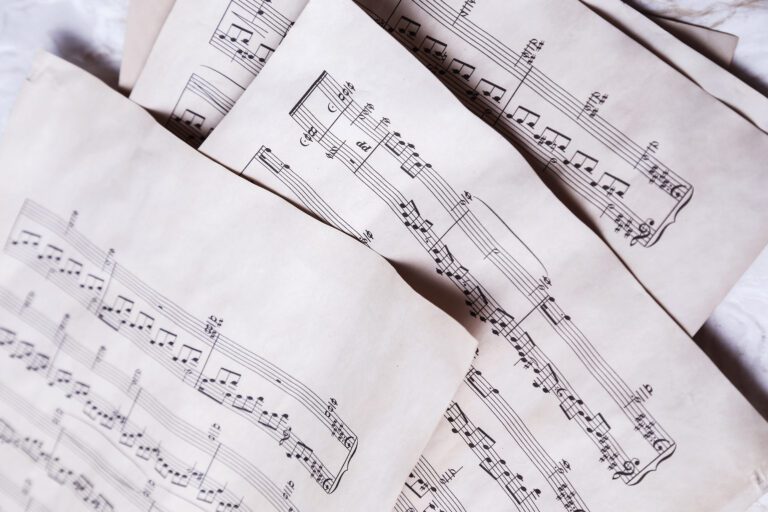
Reading sheet music is like learning a new language—but once you’re fluent, your musical journey becomes limitless. It gives you the ability to:
- Play any song with sheet music
- Compose your own music
- Join bands, orchestras, and choirs confidently
Don’t rush it. Start slow, celebrate small wins, and enjoy the progress.
Whether it’s learning to play the piano, guitar, vocals, or music theory, our mission is to build confident musicians who love what they do.
Want to learn Music in detail? Enroll in our Keyboard Classes Online and explore the fascinating world of music.
Start Your Reading Journey with The Mystic Keys Looking to master sheet music with expert guidance? Visit The Mystic Keys and enroll in our structured beginner programs today. With our support, you’ll learn to read, play, and express music like never before!
Related Blogs
Confidence isn’t something you’re simply born with — it’s something you build. And one of the most powerful, rewarding, and creative ways to develop self-confidence is by learning to play a musical instrument.
The quest for effective music to help you study techniques has led many students to incorporate music into their routines. Study playlists, often filled with soothing or instrumental tracks, are popular tools aimed at enhancing focus and productivity.


